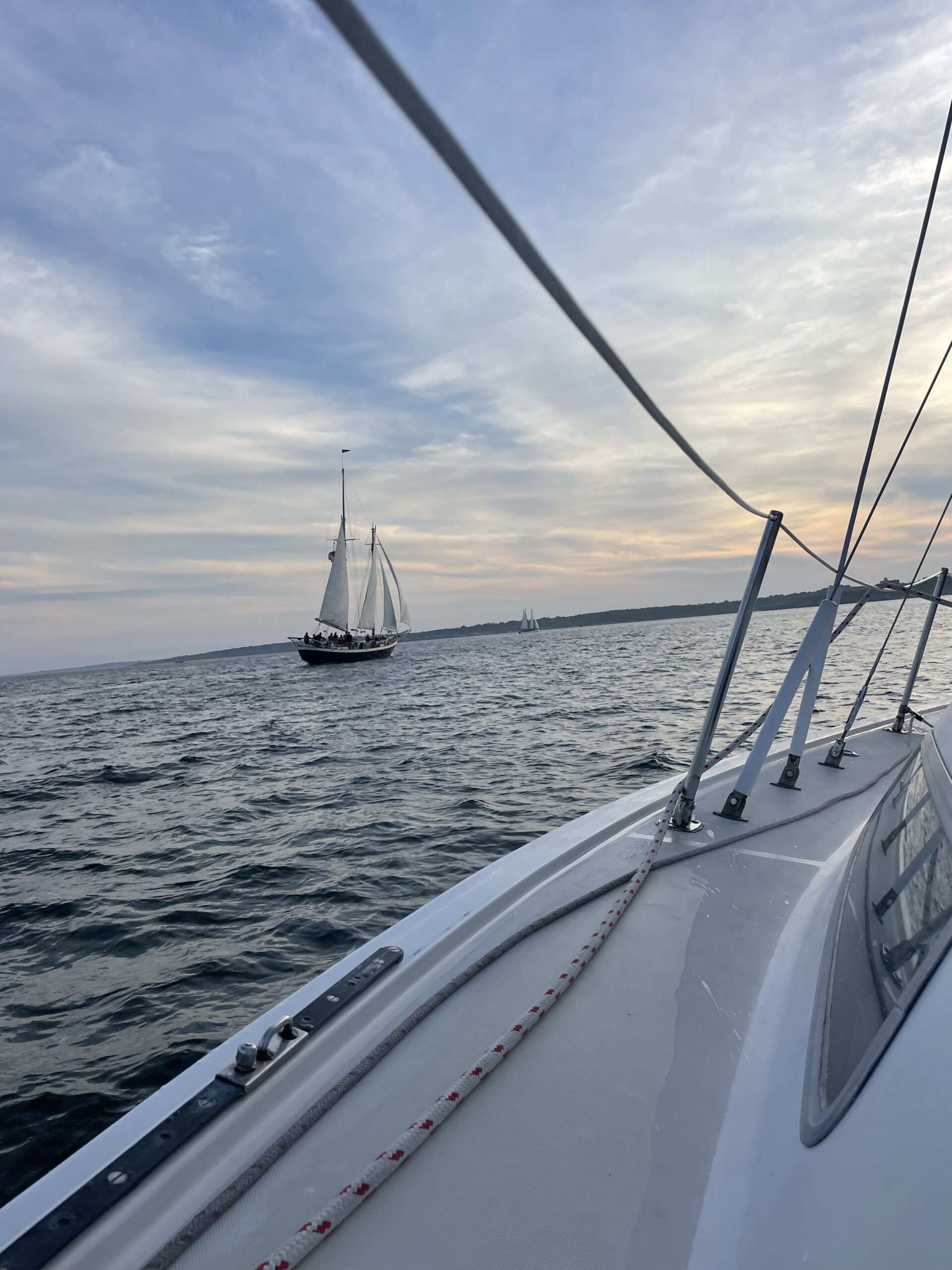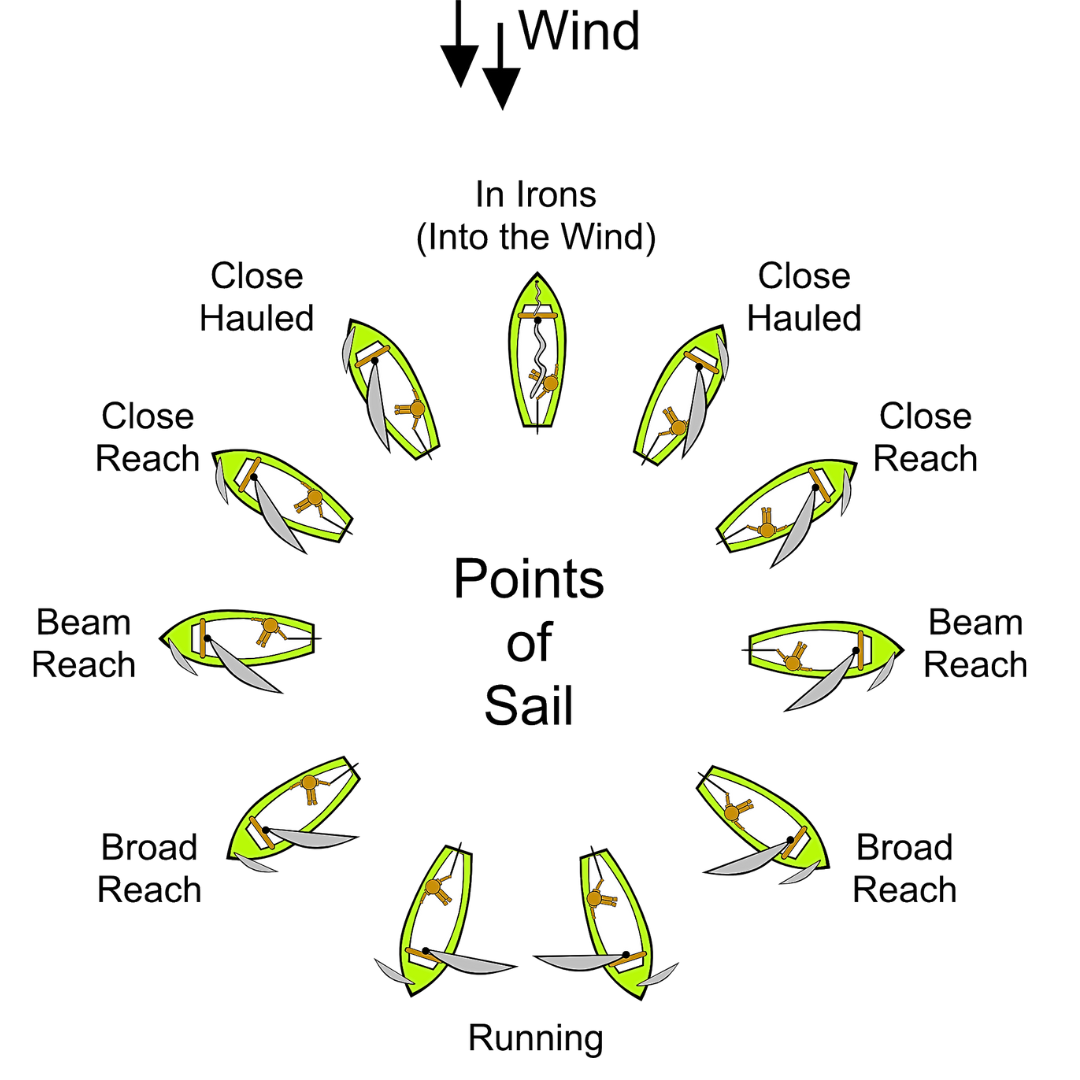Welcome all ye pollywogs and shellbacks! Whether you're a seasoned sailor or a curious newcomer, our blog is your ultimate resource for all things sailing and Newport. Set sail with us as we navigate through a sea of captivating topics, from the art of sailing to the rich history and vibrant culture of Newport, Rhode Island. Fair winds and following seas await!
Welcome
aboard
sailing
newport
history
things to do In Newport
July 11, 2024
The Points Of A Sail: A Basic Understanding

The Points of Sail describe the range of courses a sailboat can and cannot travel (asa.com).
Sailing relies heavily on understanding the various points of sail to navigate effectively.
Understanding these points is crucial for efficient sailing.
This basic knowledge helps sailors steer their vessels according to the wind’s direction with each point representing a specific angle between the boat’s heading and the wind direction.
Mastering these points allows for smoother, faster, and safer journeys on the water.
To read up more on sailing terms, check out that article.
To gain a better understanding of how your sailboat uses the wind, keep reading.
What Are The Points Of A Sail?
The points of a sail (different from parts of a sailboat) are when the direction in which the wind is blowing determines the direction in which a sailboat can travel.
The following describes the different courses a sailboat can and can’t take in relation to the wind.

The No-Sail Zone
A sailboat cannot sail directly into the wind.
This “no-sail” zone covers approximately 90 degrees directly into the wind’s direction.
While the size of this zone can vary based on the boat and wind speed, it remains a universal truth in sailing.
When a boat is caught in this no-sail zone, it’s referred to as being “in irons“.
- In Irons: When a boat is caught in a no-sail zone
Close-Hauled Courses
Just outside the no-sail zone are the close-hauled courses.
This is where the sails are pulled tightly towards the boat’s centerline.
These courses allow the sailboat to move forward at a sharp angle to the wind.
This is known as “beating” or “tacking,” where the boat zig-zags back and forth to make progress towards its destination.
- Beating or Tacking: When the sailboat sails back and forth in a “zig-zag” motion to be able to advance towards its destination more easily.
Tacking and Jibing
Sailing upwind often requires the boat to change direction quickly.
This maneuver is called tacking, where the bow of the boat crosses through the wind so that the sails can be switched to the other side.
On downwind courses, jibing is used instead of tacking, with the stern of the boat passing through the wind.
Both tacking and jibing require proper coordination between steering and sail handling to ensure a smooth transition without losing too much speed or control.
- Tacking: When the bow of the boat crosses through the wind, switching the sails to the other side. Used when sailing upwind.
- Jibing: When the stern of the boat passes through the wind to switch the sails to the other side. Used when sailing downwind.
Reaching
When the boat’s course turns away from the wind, it’s called reaching courses.
These courses allow a sailboat to travel at an angle with the wind coming over either side of the boat.
Reaching can be categorized into three types:
- Beam Reaching: The wind hits the boat at a 90-degree angle.
- Close Reaching: The course is closer to being close-hauled.
- Broad Reaching: The course is further downwind, past the 90-degree mark.
Running
When a sailboat is traveling directly downwind, the course is referred to as running or simply downwind sailing.
Each of these points of sail requires specific sail trim and steering techniques to harness the wind and move the boat effectively.
Understanding and mastering these will significantly improve your sailing experience.
Points Of A Sail — Try It Out Yourself!
Sailing can be an enjoyable and rewarding activity with proper knowledge and skills.
Understanding the different points of sail, performing maneuvers correctly, and mastering essential sailing skills will make your experience on the water safer and more enjoyable.
Keep exploring new destinations and challenges on the water, but always remember to prioritize safety for yourself and others around you.
With practice and determination, you can become a skilled sailor capable of handling any conditions mother nature throws your way.
Schedule a sailing lesson with us and practice your new knowledge!
Leave A Comment